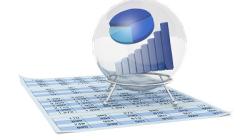This article looks at the key concepts and definitions of both integrated and agile FP&A. Through the two case studies, we explore how to connect integrated FP&A from a finance view to deliver continuous and real-time planning through an operational and technology view.
There is no hiding that companies had to look hard and rely on deep financial analysis to weather a storm like most of us witnessed in 2020. One of the key components was the growing focus on the Profitability of their services and products line. Profitability became front and center, whether it was via cost management or revenue or investment management or ALL of the above.
In an ever-changing environment, dynamic and data-driven Scenario Planning is of critical importance. That means moving from traditional methods to an agile FP&A process, which can help organisations to navigate successfully through uncertainty.
Throughout different business cases and concrete examples, the panel of experts present the needed evolution of FP&A team, linked to new capabilities that will make FP&A teams “winning” ones in the evolving environment.
The main criticism of the traditional budget is that it does not react to what is actually happening in the business during the year. But a Rolling Forecast solves that problem, helping companies to continuously plan (forecast) over a set time horizon.
Cultural change on FP&A is inevitable. As the world evolves, our cultural norms on business evolve too. The best way is to catch up with the speed of this daily evolving change is through scientific thinking. Now for our profession, data is the lowest meaningful element, such as an atom in a living organism. The advantage will favour the teams who will understand that indisputable fact and, we will witness the process closely in the future.
Pagination
Subscribe to
FP&A Trends Digest

We will regularly update you on the latest trends and developments in FP&A. Take the opportunity to have articles written by finance thought leaders delivered directly to your inbox; watch compelling webinars; connect with like-minded professionals; and become a part of our global community.






